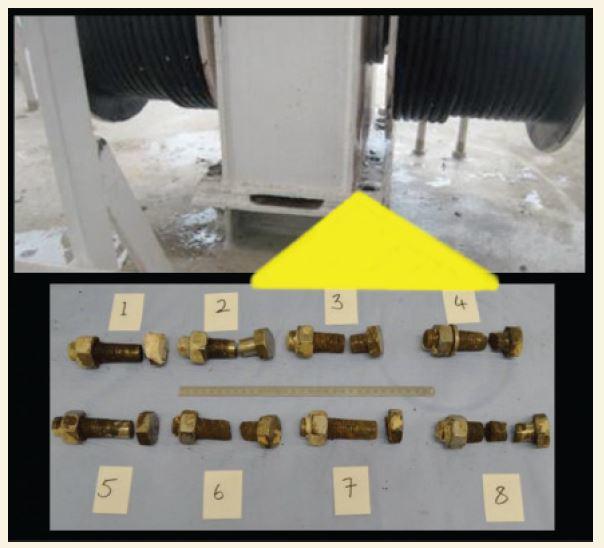201637 Corrosion-related failure of bolts used to secure lifeboat winches
Edited from International Marine Contractors Association (IMCA) Safety Flash 22-15
During a vessel inspection, a severed bolt was observed lying on deck in the vicinity of a lifeboat winch foundation plate. Further close inspection found that four other bolts out of a total of eight holding the foundation plate were also severed; these bolts were still retained within the foundation assembly by paint and corrosion.
This prompted an inspection of the winch foundation units on the three remaining lifeboats. On a second lifeboat, three out of eight bolts were detected as being severed while still held in place on the assembly by the paint coating. The remaining two lifeboat winch foundation assemblies were found to have no bolt failures.
Several years ago, a classification society casualty report identified and reported an almost identical failure of bolts. In that particular case the winch foundation failed and the lifeboat wires snapped, seriously injuring a crew member.
The company investigation found, among other things, that the bolts had been in place for approximately eight years. They had failed as a consequence of corrosion. The chromium-manganese alloy from which these bolts were manufactured was not considered a suitable material for bolting in the marine environment.
Lessons learned
-Although there was no mention of inspection or replacement routines of these bolts in the lifeboat manual supplied by the ship builder, a close-up inspection is considered prudent for such items.
-Replacing these bolts with appropriate new stock (eg grade 8.8 Hot Dip Galvanized bolts) every five years, just prior to the quinquennial testing, is a reasonable risk reduction action.

